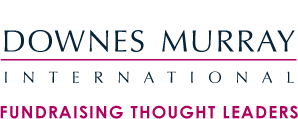Click to go back

What makes a good proposal? Telling the story
In 10 years of grant making, Dimitra Tasiouras, programme officer at the Lloyd A. Fry Foundation in Chicago, has read nearly 1 000 proposals and written dozens herself.
They’ve all followed the recommended formats: sections on needs assessments, goals and objectives, etc. Yet some of these proposals have been more powerful, more eloquent, and more persuasive than others. What is it about these proposals, that makes them so good?
The best and most readable proposals basically tell a good story and tell it in a fairly simple and organised manner. By story I don’t mean a history of the organisation, or a warm and fuzzy tale about a client. I’m talking about the basic story of the organisation and its work: What are you doing? And why are you doing it?
In journalism, a good news story has to answer some basic questions – the five W’s: Who? What? Where? When? Why? In the same spirit, I’m suggesting that a good proposal has to answer a basic set of questions.
Telling the story with the Six W’s and Five H’s
- What’s the problem? What is it that isn’t right in the world or in your community that you want to change?
- How do you know it’s a problem? Of course the answer to this question is very obvious to you. But not everyone will understand. You might want to spell it out. How many people does this problem affect? How does it hurt your community? What is the long-term impact?
- What needs to be done about the problem? Talk about the ‘big picture’ solution to the problem and your organisation’s role in that solution. What are both the immediate and long-term solutions? Who must be involved in creating the solution?
- How do you know it’s the right thing to do? What process led your organisation to this solution? Did you conduct surveys? What input did your community have? Has the solution been tried elsewhere? Is it working?
- Why is your organisation the right organisation to do it? This is where you should highlight your organisation’s history and accomplishments. What successes have you had in the past that suggest you will succeed again this time around? What resources does your organisation have (people, experience, knowledge, contacts, etc.) to tackle the problem at hand? Spell out your action steps. Use bullet points to present them in a clearly organised way. Take your reader from point A to Z in your solution.
- To whom, for whom, and with whom will you do it? Be very specific here. Who will conduct the activities? Who will participate in them? How many people will participate? How many people will be affected?
- How often, and in what time frame will you do it? Again, be as specific as you can. It’s important to give a sense of the scope of your activities. How many workshops will you offer? When will you start your action steps? When will you complete them? Sometimes it’s hard to give exact numbers and dates. If you can’t do so at this point, try to give a range of numbers and dates.
- What will it cost? You should have a separate project and organisation budget as an attachment. However, include an explanation in your proposal. This is often called a ‘budget narrative’ or ‘budget detail’. This is especially useful if you have some large line items, like ‘consultants’ or ‘equipment,’ that may raise some questions.
- How will all the costs be covered? Your budget should show both income and expenses. If you’re not asking for the full budget, you should explain where the rest of the money is coming from. If you list other foundation grants, explain whether those grants are received, confirmed or pending.
- How will you know your solution is working? There is increasing pressure on nonprofits to show the impact of their work, and foundations expect nonprofits to pay serious attention to evaluation. This is tricky, especially for advocacy and organising work. You can’t measure social change in the way you can measure increased attendance at a museum or improved grades at a school. You really must take time to figure out how you will know you’re doing what you should be doing.
- Why is this request a good fit for the... Foundation? Unfortunately, it’s not enough that your organisation is doing good and important work. Most organisations out there are doing good and important work in some way. You should spell out why your work fits with the mission and priorities of this particular foundation.
- Over the years, proposal writing has developed its own language rules, regulations, dogma and mythology. These can be intimidating and confusing. Put them aside for a while. Underneath all of that stuff is the story of how you’re changing your community. Tell it.
With acknowledgement to
The Grassroots Fundraising Journal Issue 51, March 2011.
This article first appeared in
Fundraising Forum: Issue 51, March 2011.

